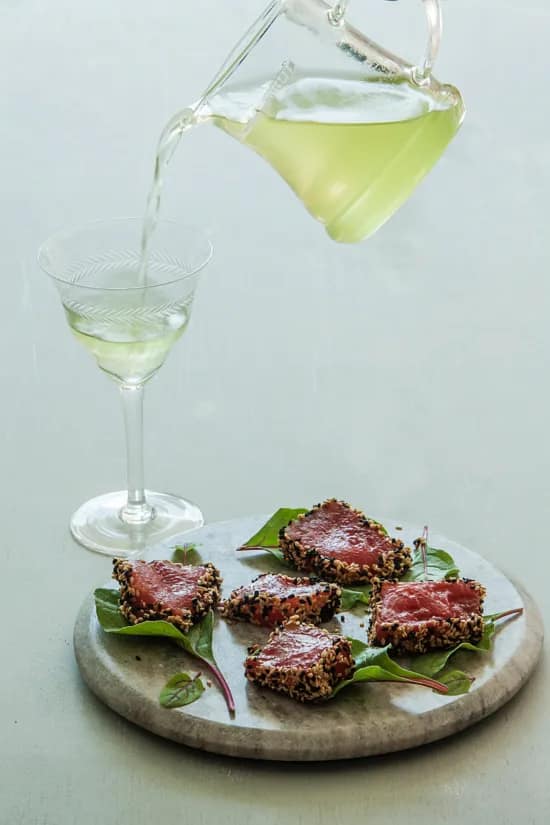[[{“value”:”
BY TANYA NANETTI SENIOR ONLINE CORRESPONDENT
Featured photo by Manki Kim via Unsplash
Yesterday, we covered the basics of brewing and tasting tea from Mariëlla Erkens’ book Tea: Wine’s Sober Sibling. Today, we continue with a look into incorporating tea in recipes and tea and food pairings.
Tea Pairings
After covering the basics, Tea: Wine’s Sober Sibling moves on to the main topic: tea and food pairing. It begins with some tips for properly analyzing food. Mariëlla helps us identify the main flavors and aromas; understand the texture, type of flavor, and intensity; and draw up a short list of teas that can work well for harmony or contrast.
It may sound like a lot. But practice and study will lighten it up, and there is a lot to study here! There is a long list of cooking techniques and tea pairings, a basic section on how the five tastes react with each other, and an overview of the basics of food and tea pairing that shows what works well with what.
And that’s where the fun begins, with a long list of recipes featuring three tea suggestions for the perfect pairing with each. There’s something here for everyone. A bresaola with parmesan cheese and lemon with a post-fermented Chinese Shu pu-erh tea becomes fuller-bodied, deeper and sweeter, with more noticeable spice notes. A spiced chocolate brownie paired with a light Taiwanese Si Ji Chun oolong becomes lighter, fresher, and gains floral notes.
Cooking with Tea
But what about cooking with tea? Mariëlla once again shares a long list of interesting recipes in which tea plays an important role. There’s a beet, avocado, and Parma ham with tea liqueur, a fish burger with matcha tarragon mayonnaise, and many others. For those skeptical about adding tea to a recipe, Mariëlla presents another interesting test. For this one, you cook the same stew, with and without the addition of a cup of strong tea. Can you believe that the stew with tea will taste richer, deeper, and fuller? Give it a try and you will be surprised how true it is.
And if you’re wondering: What about pairing tea with chocolate and cheese? Or using it as a base for cocktails, following the same idea that when tea is used as a base for cocktails, the other ingredients will become more intense in flavor and the cocktail as a whole will have a fuller texture?
Don’t worry; three chapters cover all of this.
Tea Production and More
Then it’s time to wrap up, with the final part of the book filling in the gaps by covering everything you still need to know about the magical world of tea: its production, health benefits, and use in cafés and restaurants, followed by helpful appendices that feature flavor wheels, forms for tasting notes, and a list of tea characteristics.
After you’ve finished the book, it’s time to start the fun: Look for a high-quality tea store near you, buy two or three different teas, and start tasting. Smell the aromas, taste, drink, experiment, and try out one of the suggested recipes, pairing it with one of the teas and then another.
Once you are satisfied with the results, move on to tasting and pairing something new, always keeping Tea: Wine’s Sober Sibling next to you. After all, that is the purpose of this useful tea manual, the perfect tea handbook to consult again and again during your quest to learn all about tea.
ABOUT THE AUTHOR
Tanya Nanetti (she/her) is a specialty-coffee barista, a traveler, and a dreamer. When she’s not behind the coffee machine (or visiting some hidden corner of the world), she’s busy writing for Coffee Insurrection, a website about specialty coffee that she’s creating along with her boyfriend.
Subscribe and More!
Out now: It’s the February + March 2024 issue of Barista Magazine! Read it for free with our digital edition. And for more than three years’ worth of issues, visit our digital edition archives here.
You can order a hard copy of the magazine through our online store here, or start a subscription for one year or two.
“}]]


